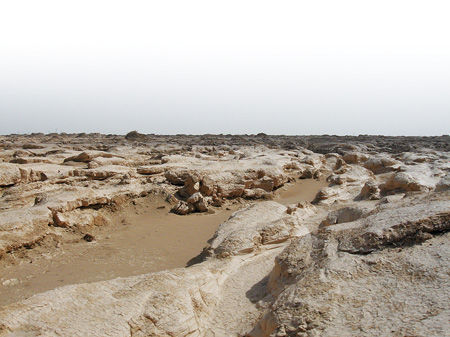
Source: German.china.org.cn
Wissenschaftler erarbeiten die Karte einer riesigen antiken Stadt
Schlagwörter: Wissenschaftler , Rätsel , antike
Chinesische Wissenschaftler planen, in über fünf Jahren genügend Informationen zu sammeln, um das antike Königreich Loulan zu kartieren und das Rätsel seines Verschwindens zu lösen.

"Mit Satellitentechnologie und Feldarbeiten hoffen wir, ein umfassendes Bild des Königreichs Loulan entwerfen zu können," erzählte Qin Xiaoguang, leitender Wissenschaftler des Fünfjahresprogrammes, China Daily am Montag am Telefon.
Neben Loulan werde das Programm auch Studien natürlicher Formationen in der Lop Nor Region, wie der Yadan Landschaft, einem riesigen Gebiet winderodierter Hügel und Klippen, umfassen, sagte Qin.
Von 2014 bis 2016 wird jährlich ein Team mit etwa 30 Wissenschaftlern in die Region entsandt, um für 20 bis 30 Tage Forschungsarbeiten durchzuführen.
"Das Programm ist die umfassendste und erste regierungsfinanzierte wissenschaftliche Forschungsarbeit in Chinas Lop Nor," sagte Qin, und fügte hinzu, dass fast zehn Millionen Yuan (1,25 Millionen Euro) zur Verfügung gestellt würden.
Qin, der zuversichtlich ist, dass große Entdeckungen gemacht werden, sagte, das Satellitenbild von Loulan zeige viele mutmaßliche Dörfer, Straßen, Übergänge, Weideland und sogar Bewässerungskanäle.
Während der Han Dynastie blühte die große Oasenstadt Loulan nahe des Sees und sammelte aufgrund ihrer Lage entlang der Seidenstraße großen Reichtum an. Im siebten Jahrhundert wurde sie jedoch, möglicherweise aufgrund von Klimaveränderungen, durch die Ausbreitung von Wüsten, durch Sandstürme und andere Faktoren zerstört.
"Wenn wir das Königreich auf einer Karte rekonstruieren können, werden Archäologen ein besseres Verständnis der menschlichen Entwicklung in der Region erhalten," sagte Qin.
Die erste Expedition in das Gebiet könne im September oder Oktober starten, sagte Qin.
Neben der Bedeutung des Königreichs Loulan für die menschliche Entwicklung und den Kulturaustausch zwischen Ost und West, kann auch die besondere geologische Landschaft den Wissenschaftlern dabei helfen, den Klimawandel in der Region und die Gründe für das Austrocknen des Lop Nor Sees zu verstehen.
"Die weltgrößte Yadan Landformation befindet sich in der Region und kann als geologischer Park verwendet werden," sagte Qin.
"Ein besseres Verständnis der Lop Nor Region kann uns helfen, den Zusammenhang zwischen Klimawandel auf der einen Seite und dem Aufblühen und dem Tod der antiken Kultur besser zu verstehen," sagte Qin.
Da Loulan eine wichtige Oasenstadt entlang der antiken Seidenstraße war, können die Forschungsergebnisse nicht nur dazu beitragen, die antike Seidenstraße besser zu verstehen, sondern auch die moderne Seidenstraße und die nachhaltige Entwicklung einer modernen Oase.


No comments:
Post a Comment